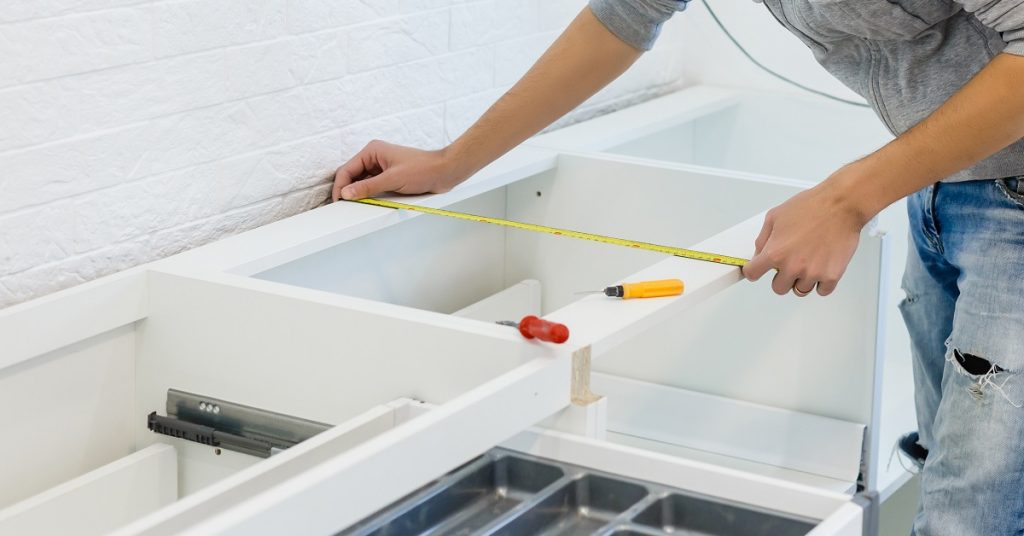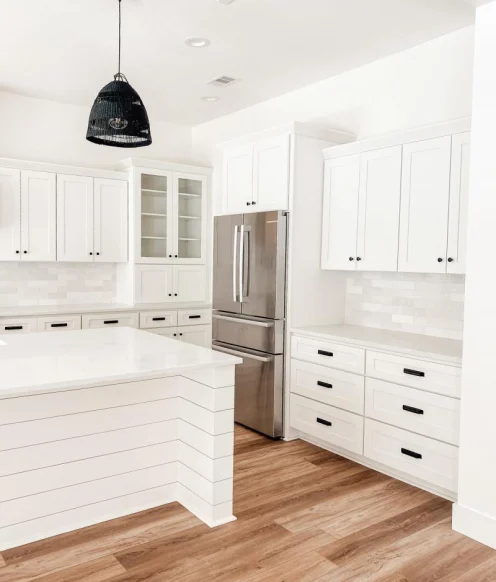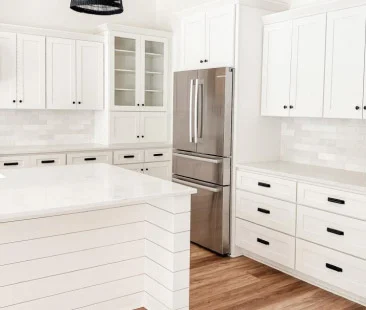Stripped screws and loose screws can be a major headache. Honestly, it could be one of the most frustrating things that can happen when you are in the middle of a project.
Whether you are trying to take something apart or put something together, once you strip a screw it begins to feel hopeless. Before you waste a lot of time (and some of your sanity), here are some tips to help you learn how to remove a stripped screw from wood.
How to Avoid Stripping a Screw
Not all screws are made the same or made of the same material, so some screws will strip easier than others. The easiest way to avoid stripping a screw is to adjust the torque on your drill.
Most cordless drills and drivers have adjustable torque, which will allow you to adjust the settings . . . the lower the number, the less torque will be applied. A good rule of thumb is that the smaller the screw, the less torque you will want to use.
It is always smart to start out with less torque to avoid stripping the screw, and adjust it up accordingly. The exception to this rule would be drywall screws, which you would always want to use less torque on to avoid driving the screw head in too far and breaking the paper on the surface of the drywall.
When you are screwing directly into wood, especially harder woods, it is always recommended that you pre-drill a hole so that you avoid not only stripping the screw, but also splitting the wood.

Stripped Philips Head Removal
So you come across a stripped screw . . . how do you remove it? They now make special drill bits that you can use to remove a stripped screw, but that is just one more tool that you have to keep in your tool box.
There are several other ways to effectively remove a stripped screw. Here are the two easiest to try before going out and spending money on a new drill bit.
Screwdriver and Hammer
One technique for removing that screw would be to take a phillips head screw driver and insert it into the screw. Gently tap down on the screw driver to drive it into the screw. Then with as much downward force as possible, try to turn the screw. The majority of the time this will work.
Screwdriver and Rubber Band
A really simple way to handle a stripped phillips head removal is to use an everyday household item . . . a rubber band. By laying a rubber band over the stripped screw and inserting the screw driver into the rubber band, it helps fill the void in the screw and give the screw driver something to grip onto.
Apply a lot of downward force, and you should have that screw removed in no time. This technique works very well with exposed screws, but is harder to do on screws that have been painted over or rusted. Either way, this is a very simple and inexpensive way of getting that stripped screw to come out.

Loose Screws
In some cases a screw may end up becoming too loose as opposed to being stripped. This will happen more often with materials like particle board, fiberboard, and mdf, but can also happen with solid woods as well. Once a screw becomes too loose or the hole becomes too big, you lose the ability to tighten the screw. Luckily there is an easy fix for that.
Everyone uses something different but the concept is still the same. You have to fill in part or all of the hole to give the screw something to grab onto again. You can use toothpicks, match sticks, golf tees, or wooden dowels and they will all accomplish the same goal of filling in the hole

While any of them will be effective, use wooden dowels and glue to ensure that it will never come loose again. If you are using tooth picks or match sticks, you can literally just break them off and insert them into the hole. For using wooden dowels, there are some extra steps
1) Using a drill bit, widen the hole to fit the size of the wooden dowel you are using
2) Using a couple drops of wood glue in the hole, and insert the wooden dowel. Let this sit until the glue dries
3) Using a saw or chisel, break off the dowel to be level with the surface
4) Predill a new hole so that you don’ t strip the screw
5) Screw in the new screw.
By taking these couple of extra steps, you can ensure that screw is NEVER coming back out!
Have more ideas for fixing stripped or loose screws? Let us know about it! For more DIY tips and tricks, subscribe to our blog.











“In some cases a screw may end up becoming too loose as opposed to being stripped. This will happen more often with materials like particle board, fiberboard, and mdf, but can also happen with solid woods as well. Once a screw becomes too loose or the hole becomes too big, you lose the ability to tighten the screw.” …
Well you ‘nailed it’ — sort of… my problem is with face screws for kitchen cabinet (MDF) hinges (european)– they are loose enough so as to resist withdrawal (no bite, just spins without coming out), but not so loose they are ineffective. But the hinge hardware has broken and so it to be removed before I can replace it. …
Open to any suggestions for how to remove a philips-head screw (head intact, not stripped) from MDF (face, not edge, no splits) without further damage to the mdf core or laminate or screw… thanks for any helpful tips to try.
hmmm… if they are loose enough to spin, they should just slide out. If there are multiple screws, then my guess is that at least one of them is still gripping and the others are not. If you can remove all of the screws that you can easily get out, then wedge something between the hinge and the face frame so that the screw is as far out as it will go while still spinning. If you leverage some gentle pressure against the screw itself (by separating the hinge from the face frame), it should either just come right out or grip enough to be able to twist out.
Oh, thanks! We’ll check that out.